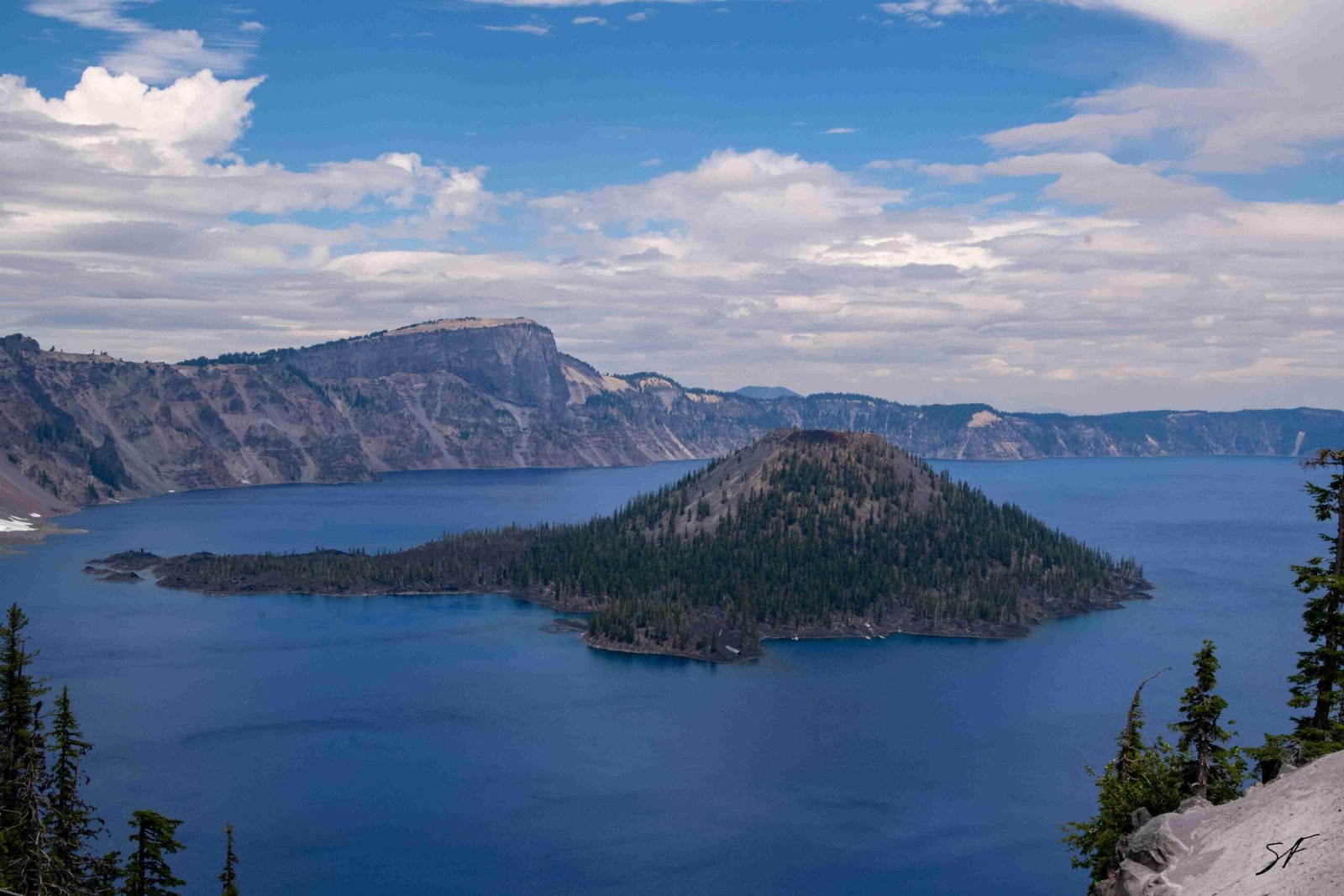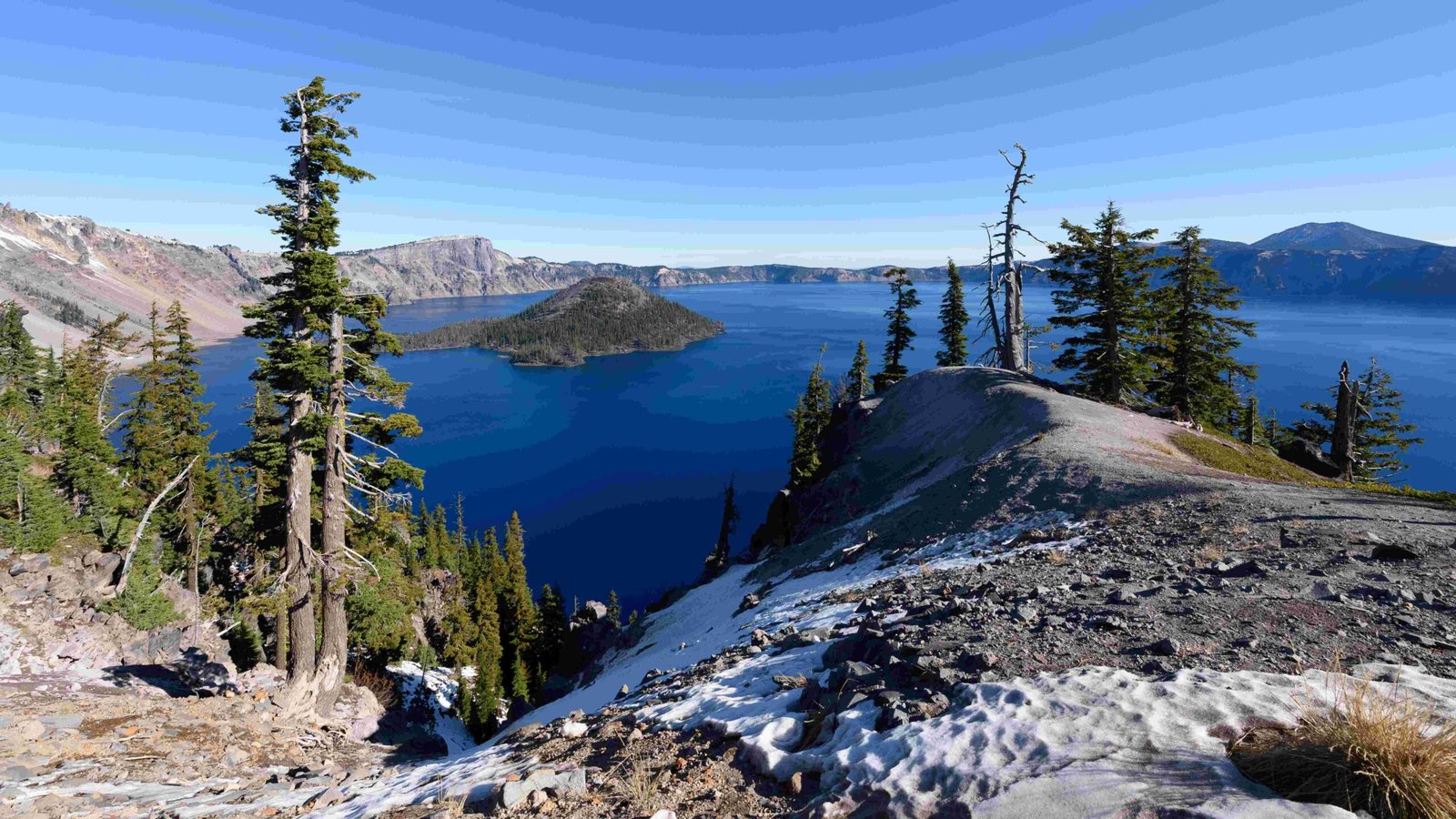Crater Lake, located in Oregon, is renowned as the deepest lake in the United States. Formed by a volcanic eruption approximately 7,700 years ago, this pristine body of water boasts a maximum depth of 1,949 feet (594 meters) and an average depth of 1,148 feet (350 meters). Its exceptional clarity, unique formation history, and stunning beauty make it a natural wonder and popular tourist destination within Crater Lake National Park.
What Makes Crater Lake the Deepest in the United States?

Crater Lake’s extraordinary depth is a result of its volcanic origin. The lake formed when Mount Mazama, a massive volcano, erupted and collapsed, creating a deep caldera that gradually filled with rainwater and snowmelt. This unique formation process led to its impressive depths, surpassing all other lakes in the United States.
How Does Crater Lake Compare to Other Deep Lakes?
To put Crater Lake’s depth into perspective, let’s compare it with other notable deep lakes in the United States:
| Lake Name | Location | Maximum Depth | Average Depth |
|---|---|---|---|
| Crater Lake | Oregon | 1,949 feet (594 m) | 1,148 feet (350 m) |
| Lake Tahoe | California/Nevada | 1,645 feet (501 m) | 1,001 feet (305 m) |
| Lake Chelan | Washington | 1,486 feet (453 m) | 474 feet (144 m) |
| Lake Superior | Michigan/Minnesota/Wisconsin | 1,332 feet (406 m) | 483 feet (147 m) |
As evident from the table, Crater Lake significantly outpaces other deep lakes in the United States, both in terms of maximum and average depth.
How Was Crater Lake Formed?

The formation of Crater Lake is a fascinating geological story that spans thousands of years:
- Pre-eruption: Mount Mazama stood as a prominent volcano in the Cascade Range.
- Massive eruption: Approximately 7,700 years ago, Mount Mazama erupted violently.
- Caldera collapse: The eruption emptied the magma chamber, causing the volcano to collapse inward.
- Lake formation: Over the next 250 years, the caldera filled with rainwater and snowmelt, creating Crater Lake.
This unique formation process resulted in a lake with no inlets or outlets, contributing to its exceptional depth and clarity.
What Contributes to Crater Lake’s Remarkable Water Clarity?
Crater Lake is renowned not only for its depth but also for its extraordinary water clarity. Several factors contribute to this phenomenon:
- Isolation: The lake has no incoming rivers or streams, preventing the introduction of sediments and minerals.
- Volcanic rock composition: The caldera walls consist of volcanic rocks that don’t easily dissolve in cold water.
- Depth: The lake’s great depth helps in settling particles.
These factors combine to create water clarity that can reach up to 134 feet (41 meters), as measured by a secchi disk.
What Activities Can Visitors Enjoy at Crater Lake?
Crater Lake National Park offers a variety of activities for visitors throughout the year:
Summer Activities:
- Scenic drives around the rim
- Boat tours to Wizard Island
- Hiking trails, including the Cleetwood Cove Trail
- Swimming at designated areas
Winter Activities:
- Cross-country skiing
- Snowshoeing
- Winter photography
The park receives an average of 43 feet (13 meters) of snow annually, creating a winter wonderland for cold-weather enthusiasts.
What Amenities Are Available at Crater Lake National Park?
Visitors to Crater Lake National Park can enjoy various amenities:
- Parking: Several parking areas near popular attractions like Rim Village and Cleetwood Cove
- Accessibility: Accessible trails and facilities, including the Cleetwood Cove Trail
- Lodging: Crater Lake Lodge and cabins for overnight stays
- Dining: Restaurants and cafeterias within the park
- Visitor Centers: Informational displays and ranger-led programs
How Much Does It Cost to Visit Crater Lake?
Entrance fees apply for visiting Crater Lake National Park:
- Single vehicle (7-day pass): $30
- Motorcycle (7-day pass): $25
- Individual (on foot or bicycle, 7-day pass): $15
- Crater Lake Annual Pass: $55
Additional costs may apply for boat tours and other special activities within the park.
What Is the Best Time to Visit Crater Lake?
The best time to visit Crater Lake depends on your preferences:
- Summer (July-September): Ideal for hiking, boat tours, and enjoying clear views of the lake
- Fall (October-November): Less crowded, with beautiful fall colors
- Winter (December-April): Perfect for snow activities, but many facilities are closed
- Spring (May-June): Wildflowers begin to bloom, but some roads may still be snow-covered
Each season offers a unique perspective on this natural wonder, making Crater Lake a year-round destination for nature enthusiasts.
Crater Lake, the deepest lake in the United States, stands as a testament to the power of volcanic forces and the beauty of nature’s resilience. Its exceptional depth, clarity, and stunning surroundings make it a must-visit destination for those seeking to experience one of America’s most remarkable natural wonders.
References:
1. https://www.craterlakeinstitute.com/general-natural-history-articles/natural-history-wonders/how-deep-is-crater-lake-really/
2. https://www.nationalparkstraveler.org/2007/11/crater-lake-average-deepest-lake-north-america
3. https://www.worldatlas.com/articles/how-deep-is-the-crater-lake.html

